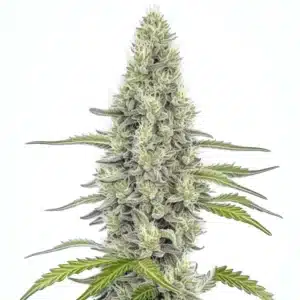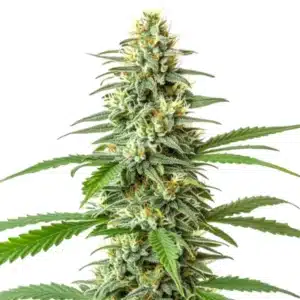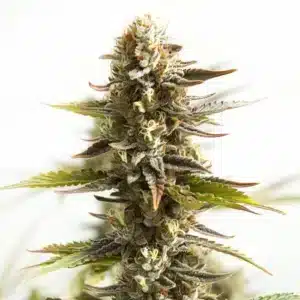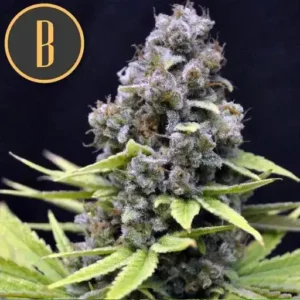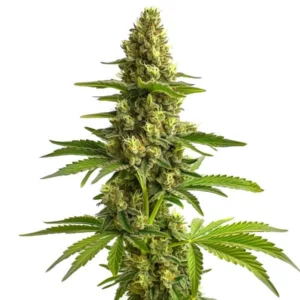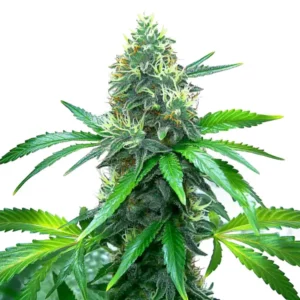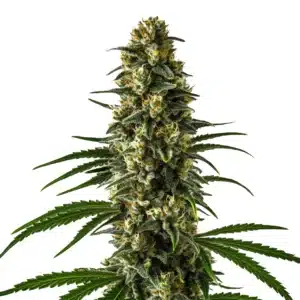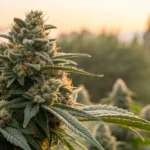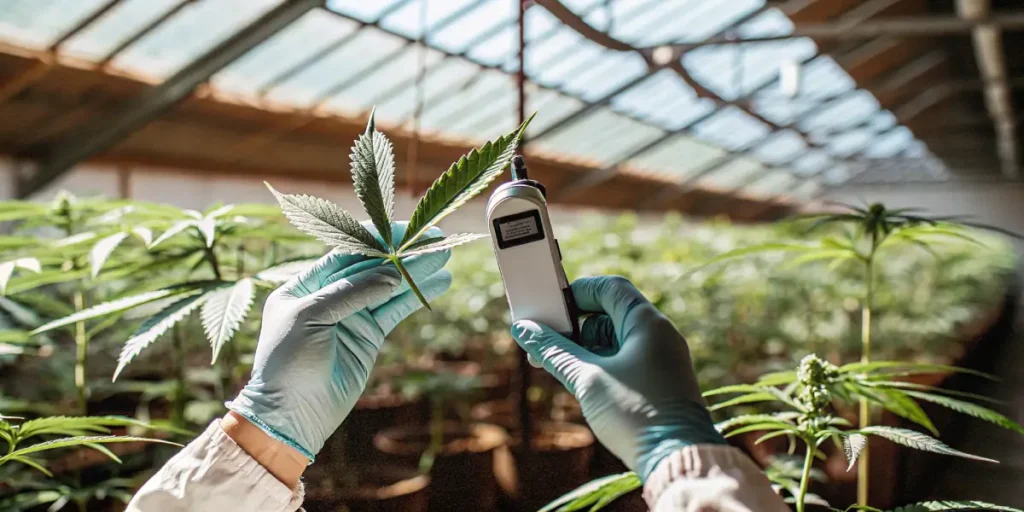
How to Measure Leaf Turgor in Marijuana
Measuring leaf turgor in marijuana is a vital skill for both newbie and seasoned growers. It helps in ensuring your plants are healthy and thriving. Leaf turgor refers to the pressure of the cell contents against the cell wall, and it plays a crucial role in plant health. High turgor pressure keeps leaves firm and upright, while low pressure can indicate dehydration or disease.
For cannabis cultivators, leaf turgor offers insights into plant hydration and overall health. By learning how to measure leaf turgor in marijuana, you can make informed decisions about watering and other care practices. Whether you’re growing indoors or outdoors, maintaining optimal turgor is key to maximizing yield and potency.
Recommended Strains
Mazar
|
|
THC | 20% (Medium) |
|
|
Type | Feminized |
|
|
Yield | Low |
|
|
Phenotype | 90% Indica / 10% Sativa |
Critical x Mazar Auto
|
|
THC | 18% - 20% (Medium) |
|
|
Type | Autoflowering |
|
|
Yield | Medium |
|
|
Phenotype | 80% Indica / 20% Sativa |
Several methods exist to measure turgor pressure, and each has its own set of tools and techniques. Whether you use sophisticated gadgets or simple manual techniques, knowing the best methods for measuring leaf turgor pressure in cannabis will help keep your plants in top shape.
Why Leaf Turgor Matters
Leaf turgor is crucial for marijuana plants because it affects photosynthesis. When the leaves are turgid, they are better positioned to capture sunlight. This process allows the plant to create energy, leading to robust growth. If the leaves wilt, it signals a problem that needs immediate attention.
Healthy turgor pressure not only supports photosynthesis but also helps in nutrient uptake. Strong turgor enables efficient transport of water and nutrients through the plant, which contributes to its overall health. Learning how to assess marijuana leaf turgidity accurately is essential for anyone looking to achieve high-quality yields.
Besides to photosynthesis and nutrient uptake, leaf turgor plays a significant role in maintaining the structural integrity of the plant. Leaves with optimal turgor are more resilient to environmental stresses, such as wind or heavy rain, which can otherwise cause damage. This resilience is particularly important for outdoor growers who need to ensure their plants withstand varying weather conditions.
Moreover, maintaining proper leaf turgor can improve the plant’s resistance to pests and diseases. When leaves are firm and healthy, they are less likely to be susceptible to insect infestations or fungal growths. Ensuring your cannabis plants have adequate turgor is a proactive measure in safeguarding against potential threats to your crop.
Promos & Deals
Tools for Measuring Turgor Pressure
Various tools can assist in measuring leaf turgor. Simple techniques involve visual inspection and touch, but for more precise data, specialized instruments are available. A pressure probe is one such tool, offering direct measurement of turgor pressure by penetrating the leaf tissue.
For those seeking technology-free methods, using a comparison against an ideal plant can be beneficial. Simply compare the firmness of leaves under different conditions. Digital tools are also available that use sensors to measure leaf turgor indirectly by evaluating humidity levels and other environmental factors.
Pressure chambers are another effective tool for measuring turgor pressure in cannabis leaves. By enclosing a leaf in a chamber and gradually increasing pressure, you can determine the point at which sap is expelled, offering a precise measure of turgor. This method, while more complex, provides accurate data and is highly regarded among professional growers.
For growers interested in continuous monitoring, integrating sensors into your cultivation setup can provide real-time data on leaf turgor. These sensors can be connected to a central monitoring system, allowing you to track changes over time and adjust your cultivation practices accordingly. Such advanced tools for measuring turgor pressure in cannabis leaves can enhance your ability to maintain optimal growing conditions.
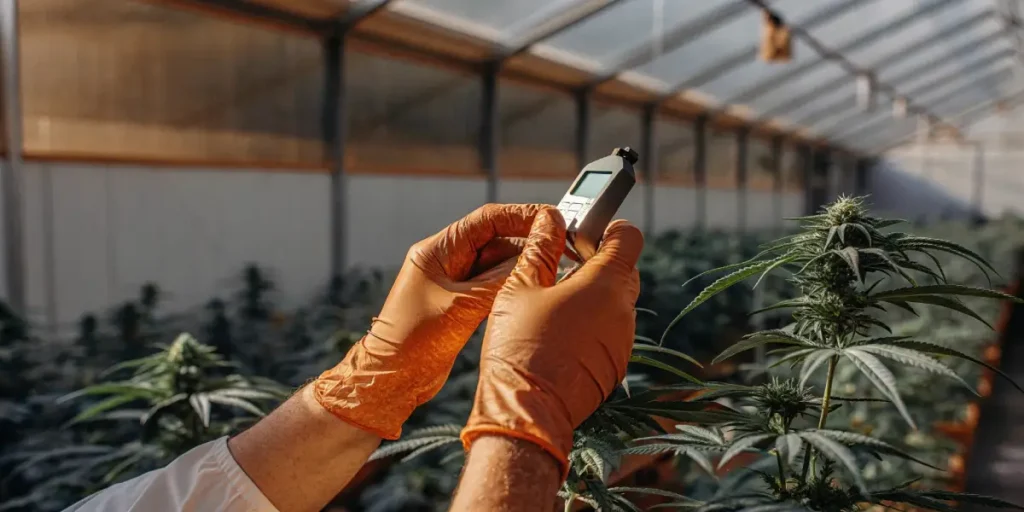
Step-by-step Guide to Measure Turgor in Marijuana Leaves
Begin by selecting a healthy leaf from your marijuana plant. Make sure it’s fully exposed to light and not shaded by other leaves. Hold the leaf between your fingers and gently press. A turgid leaf will feel firm and resist pressure, while a wilted leaf will feel limp and soft.
Next, use a pressure probe if available. Insert the probe gently into the leaf to get a direct measurement of the turgor pressure. Record this measurement for future reference. If using a digital tool, place the sensor near the leaf, and let it collect data for a few minutes.
Once you’ve collected your measurements, analyze the data to identify any trends or patterns. This step-by-step guide to measure turgor in marijuana leaves can help you pinpoint the ideal time for watering or making environmental adjustments. Regular monitoring will allow you to fine-tune your care routine for optimal results.
Additionally, consider keeping a logbook of your findings. Documenting each reading allows you to track changes over time and correlate them with growth stages or environmental shifts. This practice not only aids in immediate decision-making but also provides valuable insights for future growing seasons, enhancing your marijuana cultivation tips for leaf turgor measurement.
Cannabis Strains and Leaf Turgor
Different cannabis strains may have varying ideal turgor conditions. The Girl Scout Cookies strain is known for its resiliency, but it still requires adequate turgor pressure to produce optimal yields. Regularly checking the turgor can help you fine-tune your growing conditions.
Another strain to consider is the Blue Dream from Blimburn Seeds. Known for its high yields and potent effects, maintaining the right turgor pressure is essential for this strain. Ensure your Blue Dream plants are not wilting by keeping an eye on their leaf turgor.
Indica strains, such as Northern Lights, often have broader leaves that require careful monitoring of turgor. These strains can be more prone to water retention issues, making it crucial to understand how to measure leaf turgor in marijuana accurately. Tailoring your watering practices to suit these needs can significantly impact your harvest quality.
Sativa strains, like Sour Diesel, typically thrive in environments with higher light intensity, which can affect leaf turgor. These plants may need more frequent turgor checks to ensure they are receiving adequate hydration and nutrients. Adjusting your care practices based on strain-specific needs is one of the best methods for measuring leaf turgor pressure in cannabis and achieving successful cultivation.
Practical Tips for Maintaining Leaf Turgor
Consistency is key when it comes to maintaining leaf turgor in marijuana. Ensure your plants receive adequate water without overdoing it. Overwatering can lead to root rot, which ultimately affects turgor pressure negatively. Find a watering schedule that suits your strain and growing conditions.
Environmental factors such as humidity and temperature also play a role in turgor pressure. For cannabis plants, try to maintain humidity levels between 40-60% and temperatures around 70-85°F. These conditions help preserve leaf turgidity and promote overall plant health.
Regular pruning can also assist in maintaining optimal leaf turgor. By removing excess foliage, you allow for better air circulation and light penetration, which supports healthy turgor levels. This practice can also reduce the risk of mold and mildew, contributing to a healthier growing environment.
Soil moisture sensors can be a valuable addition to your cultivation toolkit. These devices provide real-time feedback on soil conditions, helping you make informed decisions about when to water. By integrating this technology, you can enhance your knowing of how to measure leaf turgor in marijuana and ensure your plants remain in peak condition.
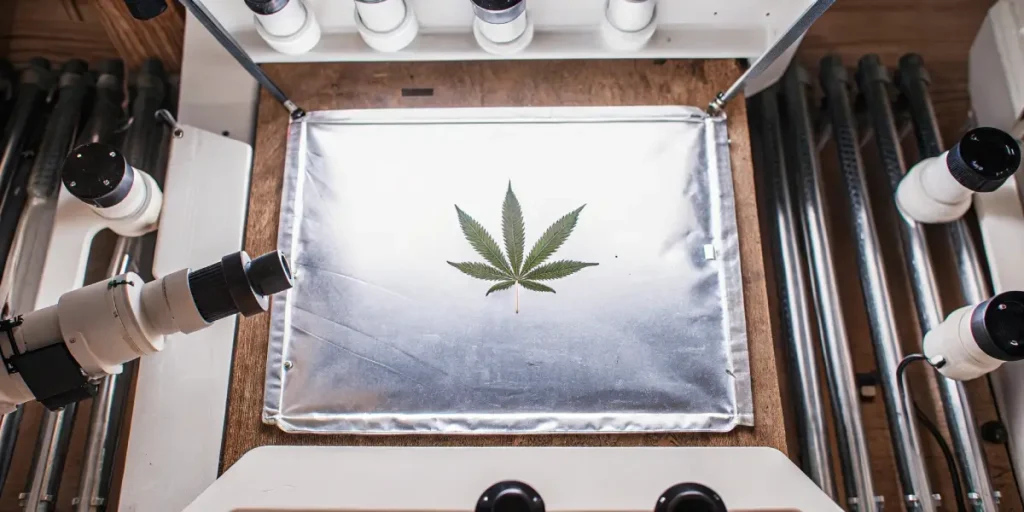
FAQs
What is the easiest way to measure leaf turgor in marijuana?
For those just starting, the easiest way to measure leaf turgor in marijuana is the touch test. Simply feel the leaves to gauge their firmness. Turgid leaves will feel firm, whereas those lacking turgor will feel limp. This method doesn’t require any tools and can give you a quick idea of your plant’s health.
This tactile method can be especially useful for strains like Girl Scout Cookies, which are generally resilient but still benefit from regular monitoring. Regular checks can help you maintain optimal turgor and ensure your plants are thriving.
While the touch test is convenient, combining it with visual inspections can provide a more comprehensive assessment. Observing leaf color and condition can offer additional clues about plant health. Discoloration or spotting may indicate underlying issues that need addressing.
Incorporating these simple yet effective techniques into your routine will enhance your ability to monitor and maintain plant health. These are foundational marijuana cultivation tips for leaf turgor measurement, setting you on the path to successful growing.
Can I use digital tools for measuring leaf turgor?
Yes, digital tools are available and can offer more precise readings. These often involve sensors that measure environmental factors affecting turgor, such as humidity and temperature. While these tools can be an investment, they provide valuable insights for serious cultivators.
For strains like Blue Dream, where optimal conditions can lead to higher yields, digital tools can be particularly beneficial. They provide real-time data that helps you make informed decisions about watering and other care practices.
Some digital tools are equipped with mobile app integrations, allowing you to monitor your plants remotely. This feature is particularly useful for busy growers who need to keep an eye on their crop while managing other responsibilities. As technology advances, these tools are becoming more accessible and user-friendly.
By investing in digital solutions, growers can gain a competitive edge in their cultivation practices. Knowing how to utilize these tools effectively is part of mastering how to assess marijuana leaf turgidity accurately and ensuring your plants reach their full potential.
What are the best methods for measuring leaf turgor pressure in cannabis?
The best methods for measuring leaf turgor pressure in cannabis depend on your resources and experience level. Simple touch tests work for quick assessments, while pressure probes offer precise measurements. Digital sensors provide comprehensive data on environmental conditions affecting turgor.
Each method has its own advantages and can be used in combination for a more accurate assessment. For example, using a pressure probe along with regular touch tests can give you both immediate and detailed insights into your plant’s health.
Besides to these methods, integrating environmental monitoring systems can enhance your knowing of turgor dynamics. By tracking variables like soil moisture and ambient temperature, you can correlate these factors with turgor changes, providing a holistic view of plant health.
Experimenting with different techniques will help you determine the most effective approach for your specific setup. Whether you’re a novice or experienced grower, mastering these methods is key to optimizing your cultivation efforts and achieving superior results.
Why is my marijuana plant’s leaf turgor low?
Low leaf turgor in marijuana plants can result from several factors, including underwatering, overwatering, and nutrient deficiencies. Environmental stressors like extreme temperatures and low humidity can also contribute. Identifying the root cause is essential for restoring turgor.
Once you identify the issue, make the necessary adjustments to your care routine. Whether it’s altering your watering schedule or improving soil quality, taking corrective action can help restore turgor and promote healthy growth.
Consider conducting a soil test to evaluate nutrient levels and pH balance. Imbalances in these areas can directly impact turgor, and addressing them can lead to significant improvements. Soil amendments may be necessary to restore optimal growing conditions.
Regular observation and documentation of your plants’ response to changes can provide valuable insights. This proactive approach allows you to refine your strategies and ensure your plants maintain healthy turgor throughout their growth cycle.
Are there specific strains that require more attention to leaf turgor?
Some strains are more sensitive to turgor pressure changes than others. For instance, OG Kush is known for its sensitivity to water stress. Regular monitoring of leaf turgor can prevent issues and ensure a healthy crop. Consistent care and attention can yield better results.
On the other hand, strains like Bruce Banner 3 are more robust but still benefit from turgor checks. Knowing the specific needs of your chosen strain helps in tailoring your cultivation practices for optimal results.
Landrace strains, which are often acclimated to specific environmental conditions, may require additional attention to leaf turgor when grown outside their native habitat. Adjusting your care practices to mimic these natural conditions can improve plant adaptation and growth.
By researching the characteristics of each strain, you can better anticipate their needs and challenges. This knowledge empowers you to implement the best methods for measuring leaf turgor pressure in cannabis, ensuring each strain reaches its full potential.


